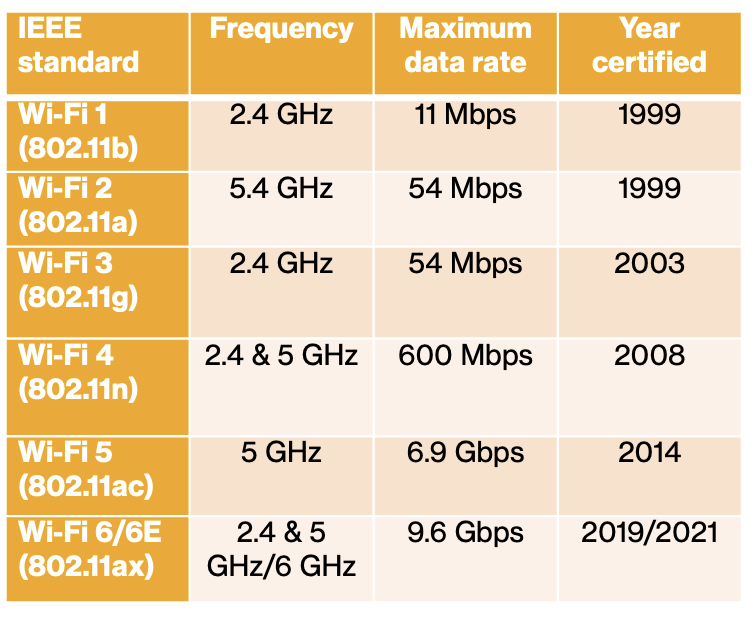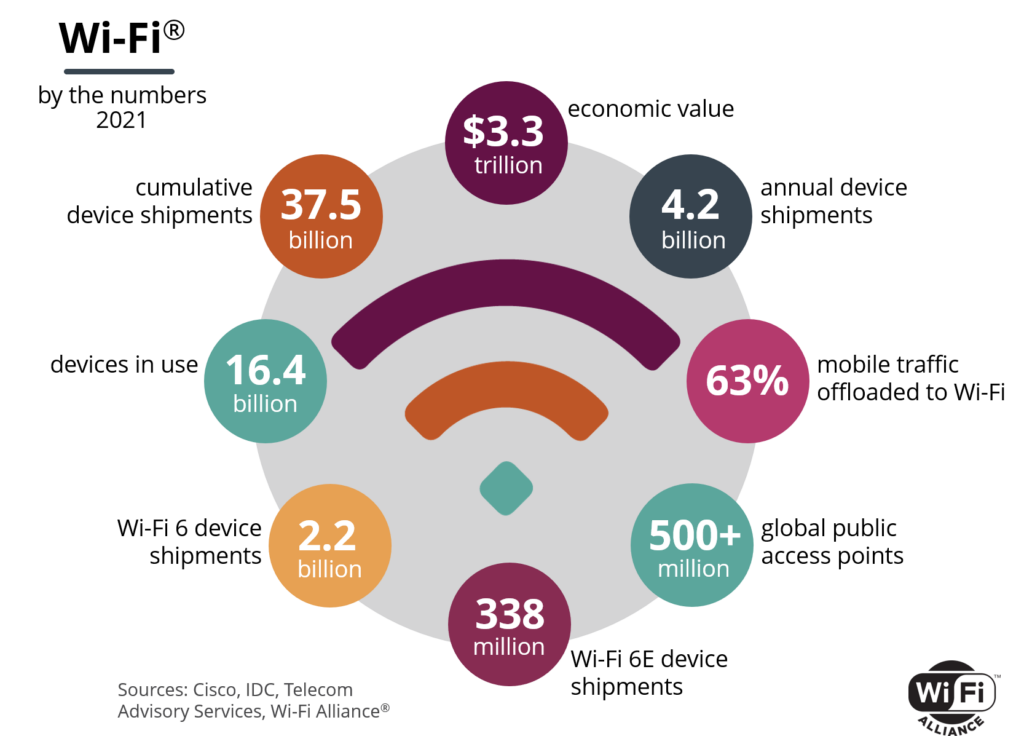It appears that how the adoption rate of Wi-Fi 6 compares to previous generations of Wi-Fi technology is a matter of perspective
According to data published by research and advisory firm The Logistics IQ, by 2026, there will be more than 13 billion devices shipped that are enabled with Wi-Fi 6 and Wi-Fi 6E, with a CAGR of approximately 26% between 2020 and 2026.
The firm also predicted that smartphones supporting Wi-Fi 6 and 6E are expected to account for more than 90% of the total smartphone market by 2026, while more than 60 million Wi-Fi 6 & 6E chipsets are expected to be shipped for automobiles by the same year. Gaming devices supported by Wi-Fi 6 and Wi-Fi 6E are expected to have a 40% compound annual growth rate between 2020 and 2026.
In addition, the firm said that public Wi-Fi hotspots are likely to reach 628 million by 2023, of which 11% will be Wi-Fi 6 hotspots, particularly in locations like airports, public transportation, retail, healthcare, smart cities and stadiums.

It appears that how the adoption rate of Wi-Fi 6 compares to previous generations of Wi-Fi technology, however, is a matter of perspective. For LitePoint’s Director of Product Marketing Adam Smith, Wi-Fi 6 adoption is really only being seen in the smartphone segment, while he says “none” of the smart home products have Wi-Fi 6 today.
“Considering that Wi-Fi is still handling all of our indoor traffic, there just aren’t that many devices out there,” he offered. “With APs, unless you’ve gone out and specifically purchased a Wi-Fi 6 access point, you’re probably running Wi-Fi 5 at home, and so even if you’ve got your Wi-Fi 6 phone, you’re operating in legacy mode.”
Wi-Fi Alliance’s Senior Vice President of Marketing Kevin Robinson, on the other hand, claimed that the adoption of Wi-Fi 6 “has far outpaced the adoption of previous generations of Wi-Fi,” and further, that adoption is “across the board.”
“Particularly with Wi-Fi 5,” he argued, “you saw adoption in specific segments, and in those segments, you still had a sizable number of devices that remained on Wi-Fi 4, and in fact, continue to stay on Wi-Fi 4.”
Because there are still Wi-Fi 4 devices out there, there is essentially a double migration going on as both Wi-Fi 4 and 5 devices are being swapped out for Wi-Fi 6 devices.
W-Fi 5 brought improvements to the 5 GHz band, so if you’re operating a single band device in a 2.4 GHz band only, and are still on Wi-Fi 4,” Robinson explained further. “There is no such thing as Wi-Fi 5 for that band, so yes, if you’re looking at enterprise APs, those are all dual-band devices, so they of course moved on to Wi-Fi 5 and are now moving on to Wi-Fi 6. But now with Wi-Fi 6 bringing improvements to both bands, you’re getting the adoption rates in those dual-band devices, but also for those single-band [or Wi-Fi 4] devices.”
Additionally, because Wi-Fi 6 offers improved network efficiency and determinism, it brings value even to devices that don’t need to operate at top speed, but will benefit from a more deterministic experience, such as low-power IoT devices.
“For that reason, even a fairly constrained device that has lower performance requirements is going to consider upgrading to Wi-Fi 6 because of the overall benefits it will provide,” Robinson said, adding that this will increase Wi-Fi 6’s rate of adoption.

When it comes to Wi-Fi 6E, Smith said that only premium smartphones like the Google Pixel 6 are currently compatible, and Extreme Networks’ Director of Wireless Networking at the Office of the CTO David Coleman indicated that by February 2022, there will likely be roughly another six or seven Wi-Fi 6E-compatible smartphones on the market.
Regardless of how Wi-Fi 6’s adoption compares to Wi-Fi 5’s, Smith thinks that the large amount of uplink traffic generated by the increasing number of smart home devices in everyone’s homes will drive residential Wi-Fi 6 adoption.
“All these machines in the house or the office are starting to generate a significant amount of uplink traffic […] whether that’s machine learning up to the cloud [or something else], but all of these things do unscheduled traffic all the time, and that is potentially going to be a bit of a driver,” he predicted.
Handsets with Wi-Fi 6 compatibility (as of November 2021)


